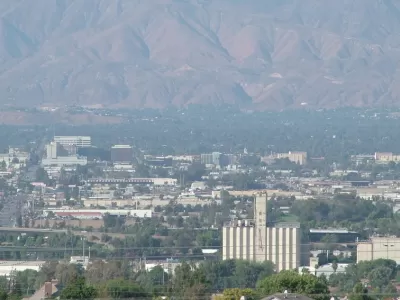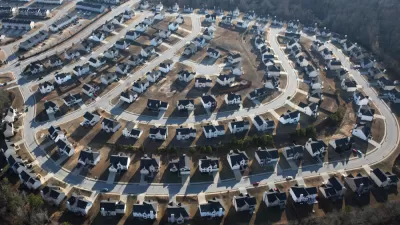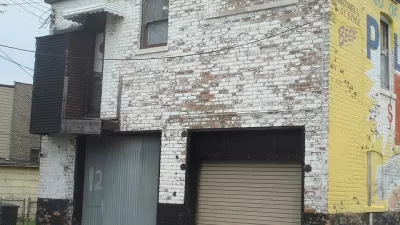New housing development is off to a slow start in Los Angeles in 2017. Although the city defeated an anti-growth ballot measure, LA is still faced with a number of policy and legal challenges to building an adequate supply of affordable housing.

Investigating the underlying reasons to why building more housing is so difficult, The Planning Report recently sat down with Randall Lewis of the Lewis Group of Companies to address Southern California’s challenges, and the opportunities for potential breakthroughs on housing production. A major force of health-oriented development and Inland Empire growth, the Lewis Group develops master-planned communities as well as shopping centers and industrial projects. Drawing on this unique perspective, Lewis offers his take on the underlying challenges that have prevented the production of housing supply adequate to meet Southern California’s increasing need.
Lewis, whose father created the Lewis Center for Regional Policy Studies, explained that CEQA misuse is the number one barrier to getting housing projects off the ground. As Lewis explains, "when CEQA is abused, it adds to the cost of doing business. Now, when you’re starting a new project, you have to factor in higher legal costs. You know you’re probably going to get sued by somebody, and it’s probably going to add at least a few months and many dollars, even if it’s a lawsuit without any merit. Here, if you have a good project—a non-controversial project—you would be lucky to get it through the entitlement process in a year. It would not be at all unusual for it to take 18-24 months—and if there are complexities, it could take a lot longer than that."
Additional costs and regulations, such as the current dispute between the U.S. and Canada on lumber prices have driven up the upfront costs. Higher densities also lead to more structural complications, fire issues, and drainage issues that are being solved on a project-by-project level.
To Lewis, solutions lie in the form of creating various housing types, maximizing spaces, and changing towards healthier lifestyles. His company is doing a series of communities called Harvest, which will all incorporate the growing of fruits, vegetables, and flowers. They’re planned to have edible landscaping, community gardens, and rich programming in partnership with the schools. To Lewis, this will engender the sense of community craved by so many, and help people in these communities live healthier and better lives.
On the policy side, Lewis promoted raising the FHA loan limit. As he explains:
In the Inland Empire right now, FHA limits are in the mid-to-high $300,000 range. But in a lot of areas, it’s very hard to find housing under $400,000 or even $500,000. That change would go very far, and a lot of people have worked for it. So far, HUD has shown no willingness. If the current administration becomes punitive to California on infrastructure funding, that could hurt us. We need to be diligent to make sure we get our fair share." - Randall Lewis
Lewis also promoted continual education of planning commissioners and city councilmembers, so that there is a good forum to share best practices and keep busy local electeds up-to-date on the housing needs of their community.
Read more of Lewis' solutions for Los Angeles in The Planning Report.
FULL STORY: Randall Lewis Opines on Barriers to Increased Housing Production

Study: Maui’s Plan to Convert Vacation Rentals to Long-Term Housing Could Cause Nearly $1 Billion Economic Loss
The plan would reduce visitor accommodation by 25,% resulting in 1,900 jobs lost.

North Texas Transit Leaders Tout Benefits of TOD for Growing Region
At a summit focused on transit-oriented development, policymakers discussed how North Texas’ expanded light rail system can serve as a tool for economic growth.

Using Old Oil and Gas Wells for Green Energy Storage
Penn State researchers have found that repurposing abandoned oil and gas wells for geothermal-assisted compressed-air energy storage can boost efficiency, reduce environmental risks, and support clean energy and job transitions.

Santa Barbara Could Build Housing on County Land
County supervisors moved forward a proposal to build workforce housing on two county-owned parcels.

San Mateo Formally Opposes Freeway Project
The city council will send a letter to Caltrans urging the agency to reconsider a plan to expand the 101 through the city of San Mateo.

A Bronx Community Fights to Have its Voice Heard
After organizing and giving input for decades, the community around the Kingsbridge Armory might actually see it redeveloped — and they want to continue to have a say in how it goes.
Urban Design for Planners 1: Software Tools
This six-course series explores essential urban design concepts using open source software and equips planners with the tools they need to participate fully in the urban design process.
Planning for Universal Design
Learn the tools for implementing Universal Design in planning regulations.
Ascent Environmental
Borough of Carlisle
Institute for Housing and Urban Development Studies (IHS)
City of Grandview
Harvard GSD Executive Education
Toledo-Lucas County Plan Commissions
Salt Lake City
NYU Wagner Graduate School of Public Service





























